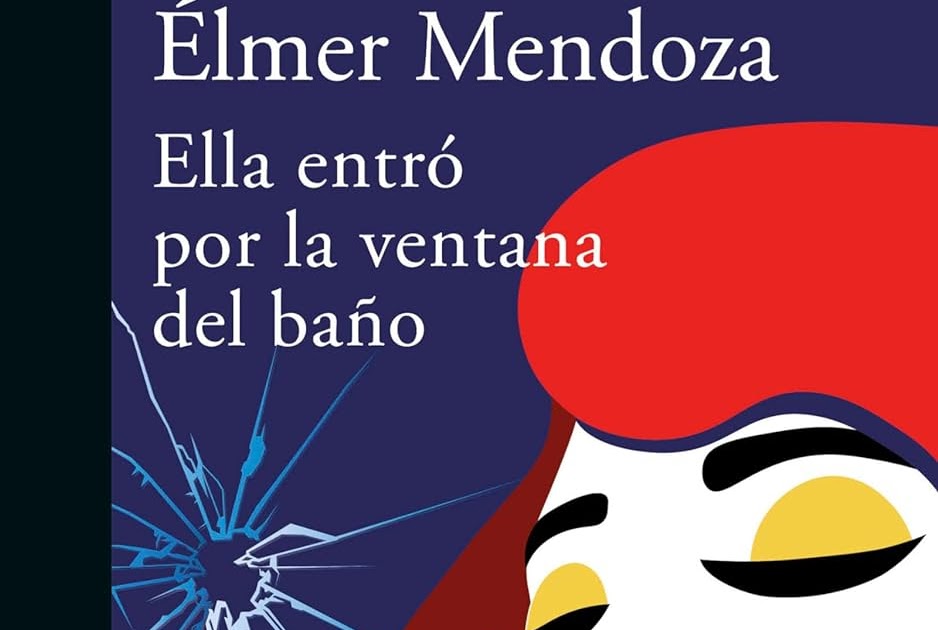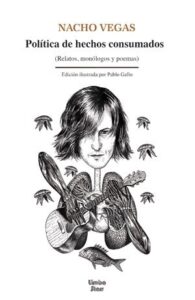
Original language: español
Year of publication: 2021
Valuation: highly recommended
Imagine that we are in Ciudad Juárez and that we are children, boy scouts. People have come from Mexico City to bring us very pleasant news. The president’s wife has come, a very kind lady, who, to be honest, I really like. The time has come when we, the children, have to give our greetings to the president’s wife and the people who accompany her, and that is what we are going to do now:
“How do children play in Ciudad Juárez?” (He throws his chest to the ground). “Above”.
“How do children play in Tijuana?” (He throws his chest to the ground). “Above”.
This is how a talk by Élmer Mendoza ends at “Casa de América” in Spain on “The aesthetics of violence.” Someone in the audience laughs, others look uncomfortable. In my case, I felt disturbed. At the end, the audience applauds happily. This is the tone with which Élmer addresses the eternal issue of violence in Mexico, particularly that associated with organized crime, or as we affectionately call it in Mexico, “El Narco.” What strikes me most about Elmer’s treatment of these issues, and which has brought him a lot of criticism, is his amoral approach. He does not intend at any time to condemn drug trafficking, police corruption, or the political complicity that accompanies it. Likewise, he does not romanticize that lifestyle (as many television series such as “Narcos” do). Élmer limits himself to making a portrait of Mexican society, mainly that of the north of the country, with all its possible nuances. However, as a Café Tacuba song says, he does not intend to kill himself for other people’s convictions, making direct allusions to a drug trafficker or a politician. However, for those who follow the news in Mexico, it is easy to imagine who he is referring to.
Considered the founder of “Narcoliterature” in Mexico, Élmer Mendoza continues a series of detective novels whose protagonist is “Zurdo” Mendieta, a very “Mexican” detective. Those who have read previous books by Élmer know very well that the “Zurdo” is not an immaculate hero; He is a product of his environment, shaped by a reality where the lines between good and evil are blurred. He navigates a system where justice is often unattainable through conventional means, and where survival and effectiveness require a healthy dose of pragmatism and moral flexibility. Mendieta does not hesitate to accept bribes, tamper with evidence or collaborate with criminals if this allows him to advance his investigations or protect those he considers valuable. This behavior reflects a criticism of Mexican institutions, which Mendoza portrays as ineffective and often complicit in the crime they should be fighting. However, despite his questionable methods, Zurdo maintains a personal code of honor, which makes him even more similar to drug traffickers.
In “She entered through the bathroom window”, Mendoza presents us with a dark plot, with its respective twists, as it should be, and complex characters. The story begins with a seemingly routine murder in the chaotic landscape of Culiacán, but is soon revealed to be a much more intricate web of secrets and power. “Zurdo” Mendieta, with his peculiar mix of cynicism and honor, must navigate through a labyrinth of false leads and dangerous enemies to get to the bottom of the truth. What is interesting here is that the novel not only focuses on the investigation of the crime, but also offers an in-depth look at life in a city marked by violence and corruption. In addition, we are presented with a parallel plot, the one that gives the book its title, in which the “Zurdo” must find a mysterious woman who, by chance, entered through a bathroom window. Yes, like the Beatles song.
Mendoza has a special talent for capturing the speech and customs of the people of northern Mexico, giving his characters an authenticity that resonates with the reader. His style is direct and unadorned, reflecting the brutal reality of life under the shadow of drug trafficking. His “broken” style, as he calls it, when describing action scenes, works very well to vary the pace of the narrative and adjust it to different scenarios. His descriptions of the urban and rural landscape of Culiacán are vivid and immersive.
One of the most fascinating aspects of “She Came in Through the Bathroom Window” is how Mendoza integrates violence into her characters’ daily lives. Violence permeates every aspect of their lives, shaping their decisions and destinies. However, despite the crudeness of the subject, Mendoza uses a very particular sense of humor, which makes reading very entertaining. If you like the character of “Zurdo” as much as I do, check out the other novels where he appears.
Élmer gave me a little of his time to talk about his work and his vision of the Mexican social panorama. Check out the interview at the link below.
Source: https://unlibroaldia.blogspot.com/2024/05/resena-entrevista-ella-entro-por-la.html


